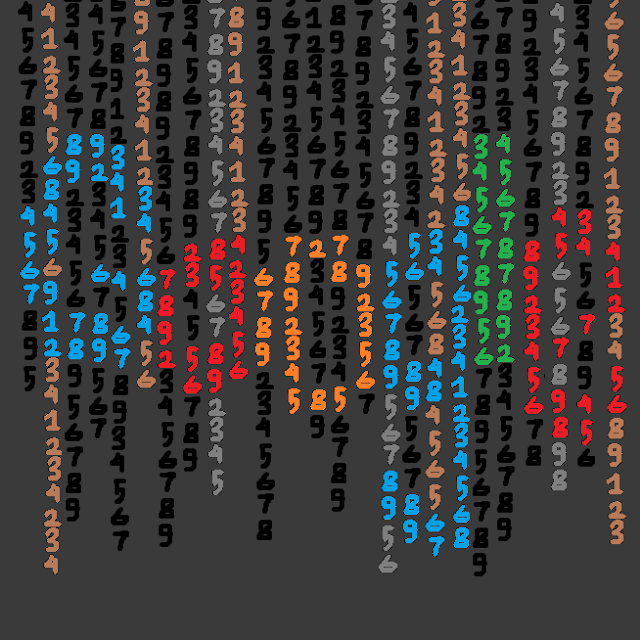MuseScore Notation Software - The Ultimate Tool for Musicians and Composers - Blog No. 42
In the digital age of music composition, notation software has become an essential tool for musicians, composers, and educators. Among the myriad of choices available, MuseScore stands out as one of the most powerful, accessible, and user-friendly notation software solutions.
Whether you're a budding composer looking to transcribe your melodies or a seasoned arranger in need of a reliable score-writing tool, MuseScore has something for everyone. In this article, we’ll dive deep into the world of MuseScore, exploring its features, benefits, and why it has become the go-to software for musicians worldwide.
What is MuseScore?
MuseScore is an open-source music notation software that allows users to create, edit, and print professional-quality sheet music. It supports various musical styles and instruments, making it a versatile choice for composers, educators, and hobbyists. The software was initially released in 2002 and has since evolved into a robust platform with a global community of users contributing to its growth.
What sets MuseScore apart from many other notation programs is that it is completely free. Unlike expensive alternatives such as Finale and Sibelius, MuseScore provides powerful features without the need for a hefty price tag, making it an attractive option for musicians at all levels.
Why Choose MuseScore?
1. Free and Open-Source
One of the biggest selling points of MuseScore is its cost—it’s absolutely free. Many professional notation software programs come with steep price tags, making them inaccessible to students or independent musicians. With MuseScore, you get all the features you need without breaking the bank.
Moreover, because it is open-source, developers from around the world contribute to its improvement, ensuring that the software remains up-to-date, bug-free, and equipped with new features over time.
2. User-Friendly Interface
MuseScore’s intuitive interface makes it easy for both beginners and professionals to navigate. The drag-and-drop functionality, keyboard shortcuts, and a well-organized toolbar ensure a smooth workflow. Even if you’re new to notation software, MuseScore’s learning curve is gentle enough to get you started quickly.
3. Comprehensive Notation Tools
From simple melodies to complex orchestral arrangements, MuseScore provides all the notation tools you need. Some key features include:
Unlimited staves: Create scores for solo instruments, chamber groups, or full orchestras.
Extensive symbol library: Includes dynamics, articulations, ornaments, and other musical markings.
Chord symbols and lyrics: Perfect for songwriters and vocal arrangements.
Automatic layout adjustments: Ensures that your scores remain visually appealing and readable.
4. MIDI and Audio Playback
MuseScore isn't just about writing music; it also allows you to hear your compositions come to life. With its built-in MIDI playback, you can listen to your scores with realistic instrument sounds, helping you refine your arrangements before performance.
You can also integrate MuseScore with external MIDI devices, allowing you to input notes using a MIDI keyboard—saving time and improving accuracy.
5. Export and Sharing Options
Once you’ve created your masterpiece, MuseScore makes it easy to share. You can export your scores in various formats, including:
PDF (for printing and sharing)
MIDI (for playback and editing in DAWs)
MusicXML (for compatibility with other notation software)
MP3/WAV (for audio playback)
Additionally, MuseScore has a dedicated online platform, MuseScore.com, where you can publish and share your scores with a global community of musicians.
6. Customization and Plugins
For those who love to tweak their software, MuseScore offers customization options and plugins to extend its capabilities. You can modify the appearance of your scores, create custom templates, and download user-created plugins to enhance functionality.
How MuseScore is Revolutionizing Music Education
MuseScore isn’t just for composers—it’s a game-changer in music education. Many teachers and students use MuseScore to transcribe music, create exercises, and practice sight-reading. The ability to slow down playback, isolate parts, and loop sections makes it an invaluable learning tool.
For educators, MuseScore simplifies the process of creating assignments, worksheets, and customized scores tailored to students' needs. Since it’s free, students can use it at home without financial barriers, fostering a more inclusive learning experience.
MuseScore vs. Other Notation Software
MuseScore competes with industry giants like Finale and Sibelius, but how does it compare?
| Feature | MuseScore | Finale | Sibelius |
|---|---|---|---|
| Price | Free | $99-$600 | $99-$199/year |
| Ease of Use | Beginner-Friendly | Steep Learning Curve | Moderate |
| Customization | High | High | Moderate |
| Playback | Good | Excellent | Excellent |
| Export Options | Extensive | Extensive | Extensive |
For musicians on a budget or those looking for an intuitive yet powerful tool, MuseScore is the clear winner. However, professionals working in film scoring or advanced notation might still prefer Finale or Sibelius for their specialized features.
Getting Started with MuseScore
Ready to dive into MuseScore? Here’s how you can get started:
Step 1: Download and Install
Visit MuseScore.org and download the latest version compatible with your operating system (Windows, macOS, or Linux).
Step 2: Learn the Basics
Start with MuseScore’s built-in tutorial or explore online resources like YouTube tutorials and MuseScore’s official handbook.
Step 3: Create Your First Score
Open MuseScore and create a new score.
Choose your instrumentation.
Begin inputting notes using the mouse, keyboard, or MIDI device.
Step 4: Experiment and Customize
Add dynamics, articulations, and text elements.
Adjust the layout and formatting.
Explore plugins to enhance your workflow.
Step 5: Share Your Music
Export your score or upload it to MuseScore.com to connect with other musicians worldwide.
Related
Final Thoughts
MuseScore is more than just free notation software—it’s a powerful, community-driven tool that empowers musicians of all levels. Whether you’re composing your first piece, arranging music for a band, or teaching students, MuseScore provides everything you need without any cost.
As the software continues to evolve, it’s clear that MuseScore is shaping the future of digital music notation. If you haven’t tried it yet, now is the perfect time to explore its features and unleash your musical creativity.
What are your thoughts on MuseScore? Have you used it in your music journey? Share your experiences in the comments below!



Comments
Post a Comment